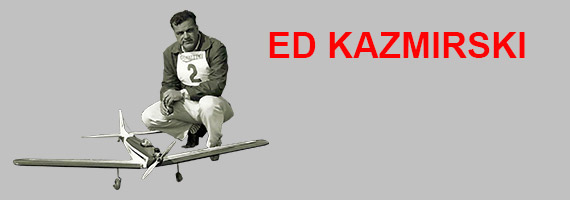
The Beginning
Edward J. Kazmirski began building models as a child and continued throughout much of his life. Ed started out with Free Flight models then later ventured into Radio Control models. His love for modeling grew out of his excitement and fascination over being able to build something that would fly.
Ed’s very first model came not from a kit, but instead was something he put together on his own without any help. The rubber band-powered model was made of 1/16-square balsa and covered with siIk, very fragile and very light. Ed enjoyed flying that plane immensely. His thriII with model design would later pay off through the kitting of three Radio Control models.
It wasn’t until the 1950s, though, that Ed joined his first modeling club in Chicago. It was called the Chicago Radio Control Modelers club and he stayed with the club for 12 years. Ed got into Radio Control models instead of Free Flight because of the frustration of losing Free Flight models. He wanted to have control of his model and not lose it.
Competition
Ed’s competition activities began later in life alter he was involved with Radio Control modeling. First, he competed in many local contests and found that competition added a new element to modeling, which he enjoyed. Soon enough Ed was competing at the national and international level .
In 1960, Ed won the Internationals in Zurich, Switzerland, flying his Orion, which is now in possession of the National Model Aviation Museum. The experience of competing internationally is something that Ed will never forget. The 1960s Internationals were the first in which the United States competed, so the U .S. team was interested to see what other countries were building and other countries were interested to see the models coming from the United States. According to Ed, Dr. Walt Good was the team manager.
When Ed and the rest of the United States team were checking in, some of the German, Swedish and French competitors came over to check out their planes. They began shaking their heads at the American models with good finishes telling people that the models would not do well because they obviously had not been test flown. The other teams thought the Americans had brought only showpieces, not real competitive models.
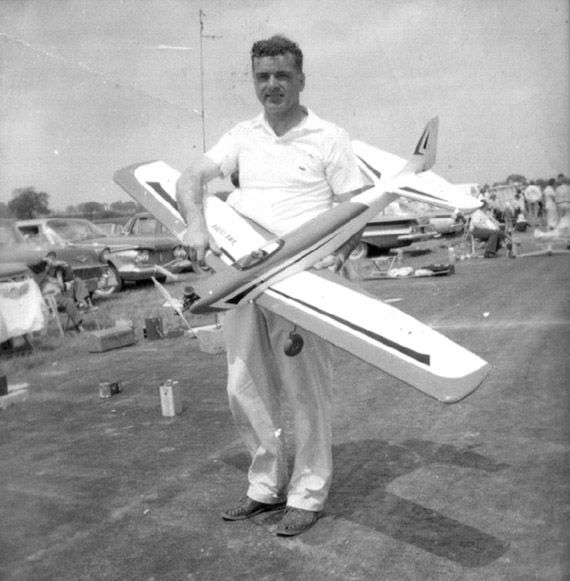
The tables turned, though, when the Americans won the Internationals. After that, the designs and finishes on the American planes were accepted internationally. This win also led to other opportunities for Ed. He began getting requests from all over the world to fly demonstrations. Ed went to South Africa to Rhodesia, as it was at that time, and flew demonstrations at rugby fields and cricket fields.
Of all the events surrounding the 1960 Internationals, though, Ed particularly remembers an event that happened while he was traveling. He flew into the London airport on his way to Switzerland and had a layover before he caught his connecting flight. After he landed, an announcement came over the P.A. system: “Will Ed Kazmirski please report to the telephone?” Ed was scared something had happened back at home and hurried to the phone. He dialed the number he was given and a gentleman answered. He said, “My name is Ronnie Moulton and I’m the editor of Aeromodeller” — a modelling magazine published in Britain — “You’ve got a six-hour layover, what would you like to do?”
Ed was relieved that nothing was amiss at home and asked to meet some of the modelers in the area. He enjoyed the time spent there and said that everyone was nice to hi m, as if he were part of a bi g fraternity.
National competition went well for Ed also. He designed and built a new plane each year for competition and in 1961, at age 40, he won the Nationals with a variation of his Orion modal, which was successful at the 1960 Internationals.
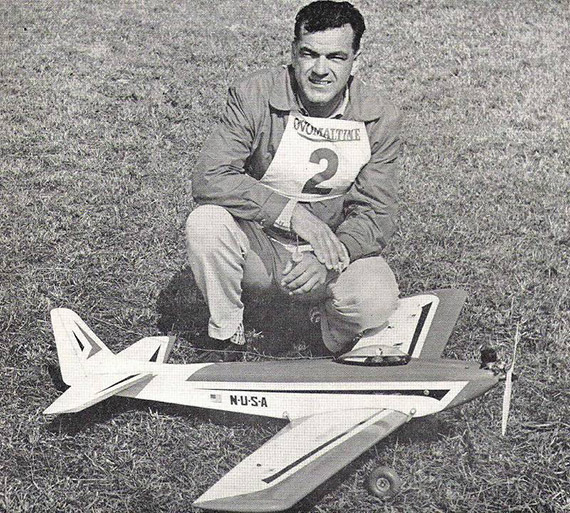
Designs and Experiments
Three of Ed’s Radio Control planes were kitted by Top Flite Models in Chicago. The first was the Orion, then the Taurus and, finally, the Tauri, a trainer. All three were quite successful because they were designed for contest work, but were also smooth flyers. Though all three planes were kitted in the early to mid 1960s, Ed still gets calls about then today (2003).
Ed was featured on the cover of the January 1963 issue of Model Airplane News magazine with one of his planes. He is unsure how many kits were sold, but said they dominated the market for quite some time.
Throughout his years in modeling, including a break for work obligations, Ed has designed approximately 10 models. He is proud to have been a pioneer in Radio Control. He said that he and other designers from about 1955 to 1965 helped develop designs and ideas that changed flight characteristics of airplanes. The basic design developed then is still being used today (2003). Prior to this period of design and innovation, many mode) airplane designs were cruder, according to Ed.
Leadership
Ed has been an active member in the modal clubs he has belonged to in the Chicago area though never took on a position such as president. He said that there were always plenty of other modelers willing to lead and he enjoyed being on the flying field the most. Ed’s work also prohibited him from spending too much time on modeling. After spending three years in the service, Ed started a machine shop with his father, which grew to have 150 employees and run 24 hours a day. Being so involved in the business allowed Ed little time for modeling and he eventualIy gave it up for a while.
He has directed contests held by his club and once was asked to go to Japan to direct a modeling Contest held by the United State Air Force.
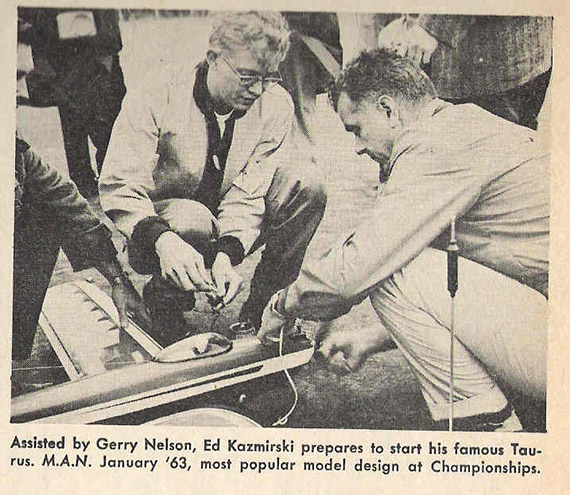
The Present
Currently (2003), Ed has tried to get back into flying a bit at the age of 81. He has found that he isn’t able to fly as he used to because his reflexes have changed. He looks back fondly on his modeling days and still enjoys talking with people who call about his models.
The following biography was published in the August 2010 issue of Model Aviation magazine, written by Duane Wilson.
Ed Kazmirski’s Taurus
R/C’s Greatest Star –the Evolution of a Classic Design
It started as a simple announcement in an RC Universe (RCU) forum that an airplane was being auctioned. This wasn’t just any airplane however; it was arguably the most famous sport and pattern plane ever designed in the fifty-plus years of R/C history, Ed Kazmirski’s legendary Taurus. Over a year later, this plane and Ed’s other designs are still being talked about (even debated!), by modelers from all over the world. If you are reading this and have never heard of Ed Kazmirski, his Taurus, or his other creations, then read on, you may want to fly these models someday soon.
. 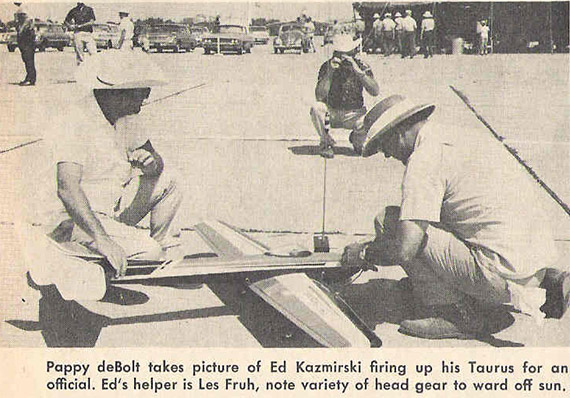
The Taurus could arguably be called the first modern pattern plane, originally designed to fly on a .45 2-stroke engine and old toggle-switch reed radio systems of the early 60s. Many of today’s pilots who have flown it say the Taurus flies even better with today’s proportional radios and a .45 to .61-size 2-stroke or equivalent 4-stroke engine. The Taurus also makes a great electric-powered model. With a 70-inch wingspan, and designed for precision aerobatics, the Taurus is still a great pattern trainer or a super smooth flying sport plane.
There were many pioneers of early R/C pattern, each with their own contribution to the hobby, but Ed Kazmirski (often referred to simply as “Kaz”), was easily the most famous. He emerged onto the national scene just as pattern competition was starting to hit its stride. Before long, everyone at the field seemed to be flying either a trainer, a Cub, or a Taurus.

Even as a newcomer to competition, Ed’s ability to master reed radios allowed him to claim his first victory at the prestigious Detroit Invitational the very first time he entered the event. He quickly established himself as the man to beat among the leading pilots of the day. Not just a superb competitor, he was an influential leader, a trendsetter and a self-taught designer. He not only was the best known pilot at home, he became a worldwide R/C celebrity due to his extensive travels overseas, including R/C aerobatic demonstration tours to the African nation of Rhodesia and to Japan. Ed was named to the US aerobatic team for the World Championships twice, traveling to Switzerland and Belgium, and managed the US team in 1965. Kaz was a true “rock star” in R/C circles, with many contributions to the hobby, and an amazing number of activities and accomplishments concentrated into in a relatively short span of time. He flew off the aircraft carrier USS Lexington for U.S. Navy sailors, and demonstrated R/C in a major league ball park in front of thousands of White Sox fans. These are only two examples of the many experiences in Kaz’s extraordinary R/C career.
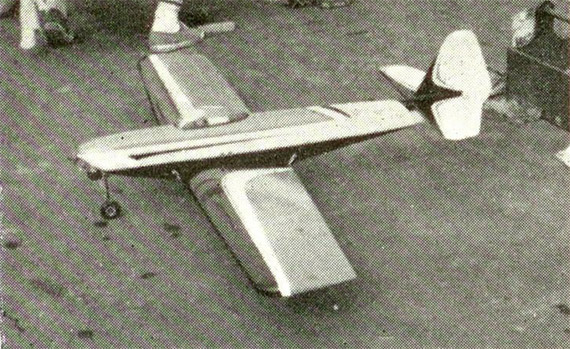
But almost as quickly as he appeared on the aerobatic competition scene, he withdrew from it in the late ’60s, citing primarily the need to spend more time tending to the family business. There may have been other factors however, including the rise of (then new and easier to fly), proportional radios, and the tremendous influx of new competitive pilots as pattern competition quickly grew in popularity.
After leaving R/C, he turned his talents to other interests including photography, where he once again created a national name for himself with many award-winning photos in travel magazine publications, including National Geographic Travel. Though he had left R/C behind, Kaz had permanently left his mark on R/C and pattern competition as a man ahead of his time with many innovations to his credit (see sidebar), shaping the sport for years to come. Like a national founding father, he hasn’t been forgotten. He would later say that the eleven years spent in R/C were the best of his life.

THE TAURUS PUZZLE, DECADES PASSED
Few people knew what had become of Ed’s models, or if they even still existed decades later. But speculation ended with that simple one sentence announcement on RCU’s Classic Pattern forum in June of 2008. Those of us interested in Kaz and his planes were amazed to see the pictures of Ed’s two remaining personal Taurus models offered up by Chuck Noble, owner of the auction house handling Ed’s estate. The planes had not only survived, but had been carefully preserved in the same travel crate built for his first overseas trip 47 years earlier. They were in surprisingly good condition, considering their age and the extensive flight history of each, requiring only minimal restoration and clean-up. Their painted finishes looked better than most of the planes you typically see today at the local flying field. It became obvious that Ed had carefully preserved the memories of his R/C days.
Almost from the beginning there was tremendous excitement on the thread from those aware of the significance of this auction. These Kazmirski finds were like buried treasure being newly discovered! Over time, Chuck released new information, photos and details of the models. What at first was just an object of curiosity quickly turned into an international investigation, as fans of the Taurus, like “aircraft archeologists”, went through their R/C magazine archives, contributing rare photos, specifications, and data as Ed’s R/C career was put under the microscope.
More and more questions about the Taurus and its evolution were raised as new clues and pieces of the puzzle surfaced, provided not only by Chuck (though not a modeler, Chuck became personally involved by providing whatever information or measurements we needed), but from literally all over the world.
The story was much more complicated (and interesting), than we had ever imagined. A nucleus of five of us from diverse locations worldwide, (including Germany, the Netherlands, Ireland, and even New Zealand, in addition to the US), contributed hard facts, ideas, and lots of speculation and educated guesses. These discussions at times were “frank” (as they say in diplomatic circles), however we had the common goal of wanting to find the true history of the Taurus along with the proper sequence of events that led to each of Ed‘s designs. As days and weeks went by, previously unknown prototypes, plans, and one-of-a-kind designs came to light. One discovery seemed to lead to another, and even months later, new sources of photos and other finds were being added to the growing evidence pile, further clarifying the timeline of Kaz’s career and variations of the Taurus. Eventually many answers began falling into place, (but questions still remain).
The first Taurus auctioned, (the one that started the forum thread), was the most famous of Ed’s two models, and the inspiration for the Top Flite kit released in 1963. This plane was eventually purchased by the Vintage R/C Society, (VR/CS) for the purpose of donating it to the AMA Museum in Muncie, Indiana
The second of Ed’s personally designed, built and flown Taurus models (one I personally had seen him fly as a young teen), was purchased by myself and a fellow VR/CS member. The Taurus-2 as it is now known, has since been restored to its original flying condition and has been flown a handful of times at special events. In spite of the possible risks of flying it, we feel at least one of Ed’s planes deserves to test its wings and take to the air once more as a living memorial to Kaz. It still flys beautifully, and the resulting photos and videos are worth the risk.
Legendary planes are great for a reason – they have withstood the test of time. After nearly fifty years, the Taurus’s excellent flying characteristics continue to make it a popular favorite. Even during the period when the Taurus was the premier aerobatic plane in the world, Ed noted that the plane was so stable that he had to develop a special kick-up elevator with the reed radio to get it to spin. With its moderate and consistent airspeed throughout maneuvers, the Taurus remains so easy to fly that the average aerobatic pilot can concentrate on flying maneuvers, not on fighting the plane through them.
Approaching eighty pages with well over 70,000 hits, the Ed Kazmirski’s Taurus thread on RC Universe’s Classic Pattern forum, is a very long thread to wade through, but there is a reward in the form of much solid historical documentation among all the opinions and theories. When exploring the Taurus’s evolution, you develop a sense of what Ed was trying to achieve, and how this one special plane influenced aircraft design for years to come.
Though we think we have a good timeline for many of the highlights of Kaz’s career, many questions remain unanswered. What about a nearly finished variant that was discovered and preserved with the other two models for over 40 years? When was it built? What about the “Pusher Taurus”, and other Taurus prototypes, what happened to them? Was Ed truly satisfied with the final Taurus-2? If not, what would he have changed?
I have a twofold purpose in writing this article: First, that a new generation of modelers will discover the joys of the Taurus for themselves by building and flying one. Secondly, I hope that we may continue to learn from new sources about what is arguably the most famous R/C model ever created.
For those wanting to try something different, while at the same time flying a piece of history, Jeff Petroski of www.homeandhobbysolutions.net has a very reasonable laser-cut kit of the Taurus. He also has kits for Ed’s Orion, Taurus-2, and large-scale Simla designs in the works.
I believe many answers are still out there, and hope that modelers who knew and flew with Kaz can add to, or correct the reconstructed history we have to help us complete the story.
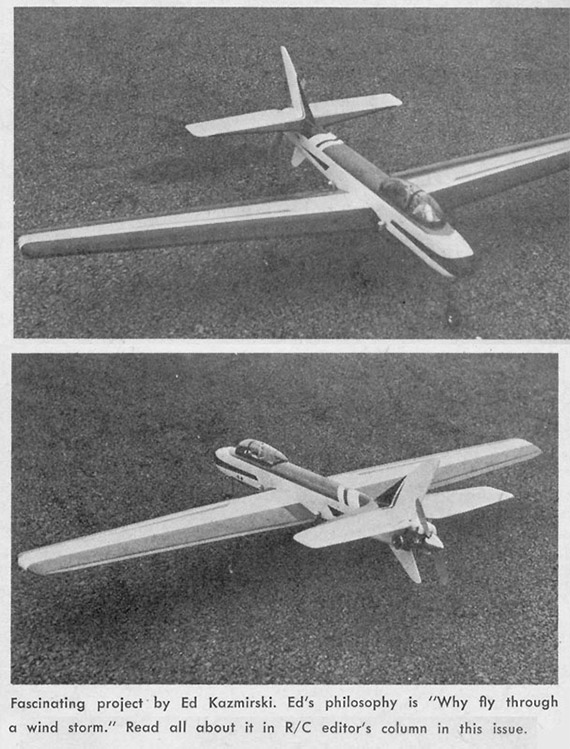
Sidebar 1: The Innovator – No Two Models Were Alike
When Chicago’s Ed “Kaz” Kazmirski came upon the national scene, it was obvious he had an extraordinary talent for flying with “reed” radio equipment. He also had a drive for excellence, and a natural gift for experimentation. Here is a description of Ed from the an issue of Grid Leaks, (a modeling magazine of the time),
“He’s a guy who ponders, who does not accept the satisfactory as the ultimate, who visits airports to study real-crate details, or consults with full-scale authorities who have broken ground in fresh areas…”
Other descriptions of him were similar; he was a man who was always looking for a better design by means of research and intuition. He flew R/C in an age before computer-assisted design, when designing pattern aircraft was as much trial and error as engineering.
From the beginning Ed chose not to compete with a stock-built plane. The earliest information we have reports him competing in 1959 with a “modified” Astro Hog, (a leading design of the time). He was in his late-30s as were most of the pioneers of pattern back then.
His early success led to his first original design, the Orion for the following season. Ed proved the effectiveness of his earliest modifications, and made his Orion famous by consistently winning contests. He won the 1960 World Championship held that year in Switzerland with the Orion, which was soon kitted by Top Flite. He became the man to watch in R/C Pattern!
Almost immediately after his win at the World Championship, Kaz started work on a radically different pattern ship concept he called the Taurus. During what became a four year development period, at least two prototypes were produced that we are aware of. The first was derived from the Orion, but it wouldn’t have been recognizable to us today as a Taurus. The long nose moment and stubby tail of this configuration proved to be a disappointment, as Ed later said in an interview.
Learning from this first effort, Kaz’s second prototype was built on the concept of a smooth flying, higher-drag, and slower, more constant speed model. These flight characteristics resulted from a deliberate attempt to build as light a plane as possible, and employed a relatively thick airfoil, short nose, and long tail moment. These design features became the benchmark for all future Taurus models. The plane that would set the standard for R/C sport and pattern flying for years to come was born!
From all the evidence we have while studying the evolution of the several Taurus variants, it appears Ed never drew out formal plans for any of his designs. The earliest plan we have was for the just discussed second prototype, and was drawn by Frank Myers, and labeled the Prototype Contest Model. It was dated December 6, 1961 and was drawn after the fact from the completed plane. The plan provides a first flight date of Thanksgiving 1961. It also sports a pilot figure named F.U. Kilroy (who happened to look a lot like Ed), smoking a cigar.
Dennis Hunt, originally from what is now the African nation of Zimbabwe, coordinated Ed’s first overseas tour in April 1962, for the purpose of promoting R/C in general and precision aerobatics in particular. Dennis later relocated to America, and is currently a leader in the Senior Pattern Association (SPA). In his soft-spoken South African accent, Dennis recalls that as part of the tour arrangements, he built a duplicate of Ed’s Taurus in the event Ed wasn’t able to transport his planes down to Southern Africa, (this was before the Top Flite kit or even the prototype plan was drawn.) As described in the Model Airplane News article (Our Mr. K. Goes to Africa), Ed sent Dennis letters and audio tapes describing the details of his new prototype. Some of Kaz’s sketches were even drawn on “crude brown paper“. In the end however, Kaz was able to ship his own planes for the tour that lasted for three weeks.
Two months after returning home, Kaz flew his Taurus to a NATS win, and plans were made for a second kit. During the summer of 1962, many Taurus prototypes were flown by his friends and fellow competitors giving the new plane an impressive contest record before it was even released. It was a great marketing technique, but the Taurus legend was firmly established because of more than just marketing.; the fresh, new design had to be a superior aircraft that could out-fly the competition, which it convincingly did.
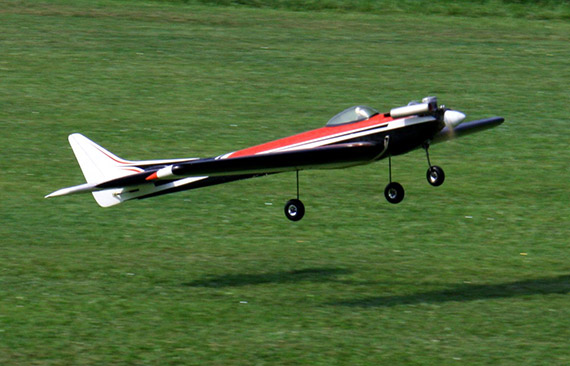
The Taurus was not a single model, but more an evolution over several years that started with that first Orion hybrid, and changed with each successive version. It is now clear that Ed never built two planes exactly the same, but continued to experiment as the design evolved. He experimented with two airfoils, changed the wing shape and position, stab thickness, and tail moment length, but all versions adhered to the same successful design formula.
Ed’s second generation Taurus, (T-2), which was flown during the 1964 season, employed a tapered leading edge and straight trailing edge, design features found on most pattern planes that followed. A new airfoil was borrowed from Fritz Bosch, a German pilot he met at the 1963 World Championships. The Bosch airfoil was symmetrical and had a sharper leading edge for a better spin, yet it retained its thickness for the increased drag Ed wanted. A new feature was a large, thick-sectioned horizontal stabilizer, again to presumably increase drag. The fuselage was also sleeker in appearance, and had the longest tail moment of the series.
Magazine clips and photos about Ed and his projects continued to surface on the thread revealing previously unknown models. We were surprised to discover a number of Taurus variants were built over a relatively short span of years, even a jet-like Pusher Taurus was built for the 1964 Toledo model show.
The biggest surprise to the modeling world came in 1965 as Kaz once again turned in a totally new direction with an ambitious project based on the Taurus, a large scale 102 inch wingspan model designed to fly better and smoother than the conventionally-sized pattern ships of the time. By May of that year, Ed unveiled what proved to be an exciting, but troubled model that was decades ahead of the large scale and two-meter aerobatic ships common today. Called the “Simla”, and named after a town in the Himalaya Mountains, it also served as an experimental ship. It had adjustable wing positions (shoulder, mid, and low wing), adjustable dihedral and incidence, and most innovative of all, plug-in wings which was unheard of in the mid ‘60s. As with all of Kaz’s designs, the Simla drew a crowd wherever it went.
I had the opportunity to interview Ed by phone about the Simla’s story (MA Oct 2007 In the Air), shortly before his death in 2007. The plane had generated a lot of renewed interest when its picture was published in the July issue of MA. Ed told me that before the first flight, a photographic floodlight fell on it during a professional photo shoot. The light landed “right on the C/G…“ Flight performance suffered due to the extra twelve ounces of weight added during repairs on a ship, (with a .60 2-stroke engine), that was already much larger and heavier than other models of the time. Still, the Simla flew well in several contests, and underwent two modifications in an effort to improve performance before competing in the 1965 NATS.
Unfortunately the Simla’s life was short. It mysteriously disappeared from its storage place in the crawlspace of Ed’s home and was permanently lost. It was a difficult loss for Ed, and like all of his planes, there were no plans. This incident may have hastened Ed’s early departure from R/C, we don‘t know. You could still hear the sense of loss in his voice after all those years while telling the Simla‘s story, but he was gratified to learn of the renewed interest in his final design by the modeling public.
The story isn’t over though. After Ed’s passing, new and previously unknown photographs of the Simla were found in his estate, making it possible for the first time to reconstruct Ed’s final creation. There now is a Simla recreation project underway; I’m sure Kaz would have loved to see it fly again.
The Taurus legend lives on as people rediscover the its gentle, but distinctively pattern flight characteristics. The VR/CS has named the Taurus its “theme plane” for 2010.
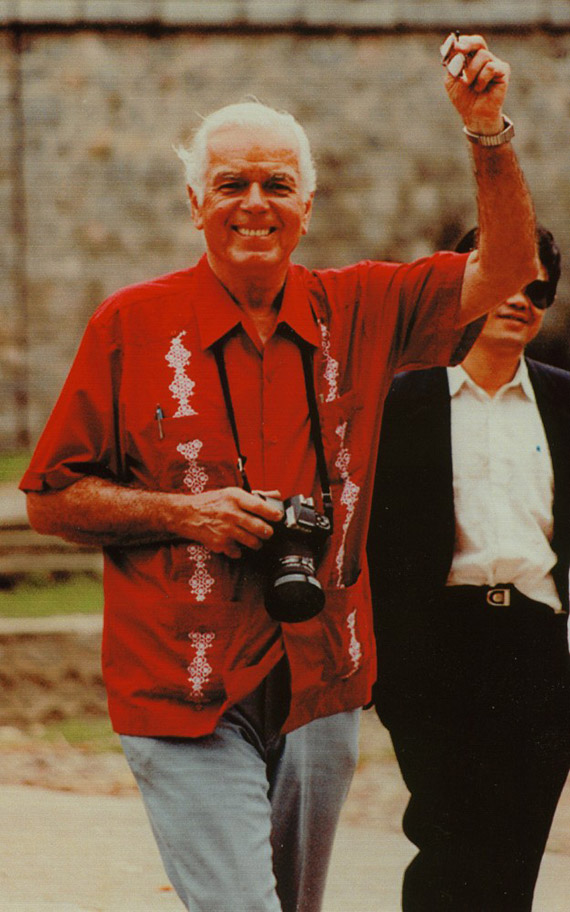
The Taurus Auction
The Vintage Radio Control Society (VR/CS), like most organizations has its own on-line discussion group. When the Taurus auction was announced, a few of us said something like, “You know, as an AMA special interest group devoted to the preservation of R/C history, we really should try to acquire this special plane and donate it to the AMA museum.” Members soon chimed in saying, “Put me in for $10”, “Yeah me too! “, or “Put me in for $20.” We would soon realize that this historical aircraft would fetch a premium price when a new, unknown bidder appeared, putting the plane far out of reach of the average guy. We would need more than a casual effort if we were going to be successful. It quickly became obvious we needed to pool our resources and get serious with a coordinated bid if we had any chance of landing the Taurus. From that point on, a truly grass roots effort spontaneously took hold within the membership. Eventually we organized thirteen contributors, with our historian Giuseppe, (Beppe) Fascione, personally pledging $1,500 to help make ours the winning bid. With an example like that, other members contributed $500, $100 or whatever they could afford; it was a great coming together for a common cause.
As the deadline approached, the mystery man was still in the lead with an $1,800 bid, but we had already raised and were prepared to pay essentially whatever it took. As time ran out, the bid jumped to over $2,900 as the mystery bidder made his final bid, but we had it covered.
So who was the unknown bidder? The mystery man turned out to be a gentleman (and Ed Kazmirski fan) from Japan. He later identified himself on the RCU thread and congratulated VR/CS on their win. He said he would have (eventually) donated the plane to the AMA museum, but we feel the final outcome, (and keeping it in the USA) was best.
Kaz’s most famous Taurus was displayed (up close and personal), at a number of shows and VR/CS events before a special donation event in Muncie where it formally joined one of Ed’s Orions in the AMA Museum. The Taurus is in beautiful condition, and will be there for you to see. So drop by when you’re in the area, and take a look at some model airplane history! While you’re at it, a copy of the original January 1963 Model Airplane News article written by Kaz can be obtained from AMA archivist Jackie Shalberg for a modest fee. It is well worth it for anyone interested in the Taurus!
Approximate timeline of Ed Kazmirski’s R/C Career
September 1957—Ed’s first 1st Place win at “Great Lakes” R/C Meet (Detroit)
August 1959 US Nats.—(Modified Astro Hog 2nd)
June 1960 —Orion plans published
July 1960 —FAI Championships Switzerland—Orion takes first
November 1960 —Orion kit released
August 1961 US Nats. —(modified Orion/”experimental” model. First design Ed calls a “Taurus”, with long nose moment/short tail moment- not happy with this concept)
Thanksgiving 1961(Nov)—Reported date of first flight of “Contest Prototype” Taurus
December 6, 1961—First formal Taurus plan drawn
April 1962 —Ed’s Africa tour. (Starts April 17 for three weeks–Taurus used).
May 1962 —Tauri kit released
August 1962 —US Nats. Taurus wins
October 1962 —Taurus plan published in RCM&E
December 1962 —Top Flite Taurus kit released
January 1963 —Taurus plan/article published in MAN
July 1963 —Ed skips 1963 NATS
August 1963 —Carrier Flights Off USS Lexington–(demonstrates Bob Dunhams’ Orbit proportional. Taurus-2 flown with original semi-symmetrical, very thick wing)
August 21,1963 —FAI Championships Belgium. Reed Taurus 3rd. (Back-up is Taurus-2 with thick wing and early proportional radio)
Early 1964–Ed is featured R/C Expert on Japanese tour flying a Taurus-2 variant
Mar-April 1964 Grid Leaks— Discussed Kazmirski “Pusher” (Probably appeared at Toledo show February 1964)
April 1964—Tauri (high-wing trainer) plan published
August 1964 US Nats.—(Taurus-2 with Taurus standard thickness Bosch airfoil, and tapered-wing with straight L.E.)
May 1965.—Ed’s personal Simla pictures taken with original 102” wingspan and narrow ailerons .
August 1965—
• August Radio Control Modeler back cover displays Simla as part of ad
• US NATS. Simla flown at the NATS, (likely with 96-inch“clipped wing”)
Ed captains 1965 USA team at FAI World Championships
Duane Wilson


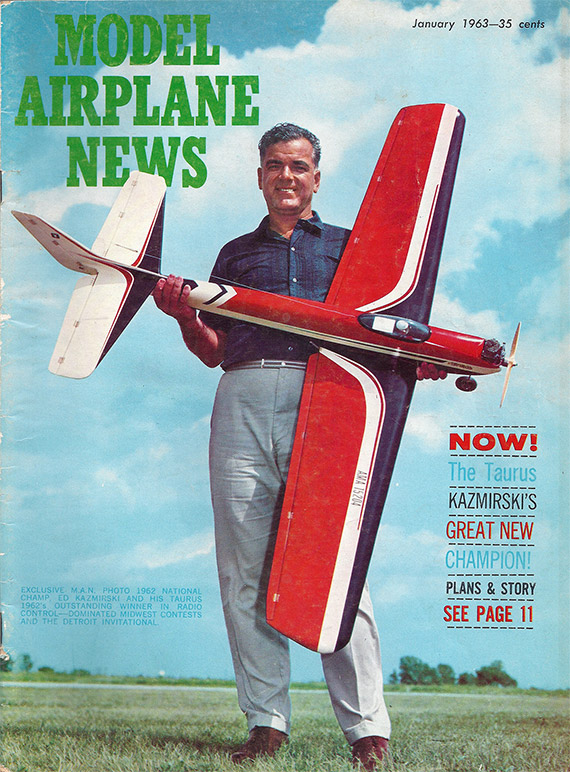

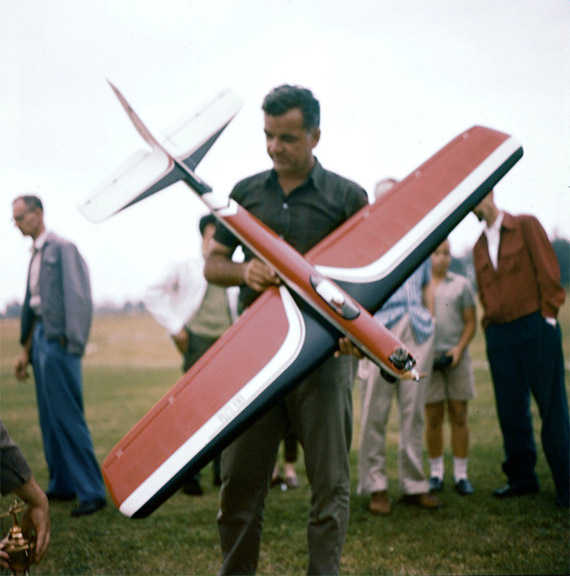
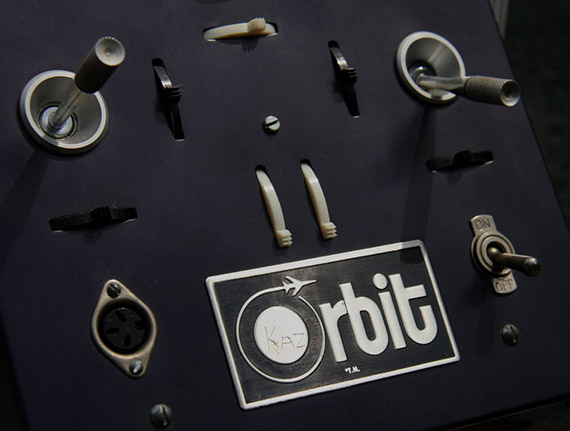
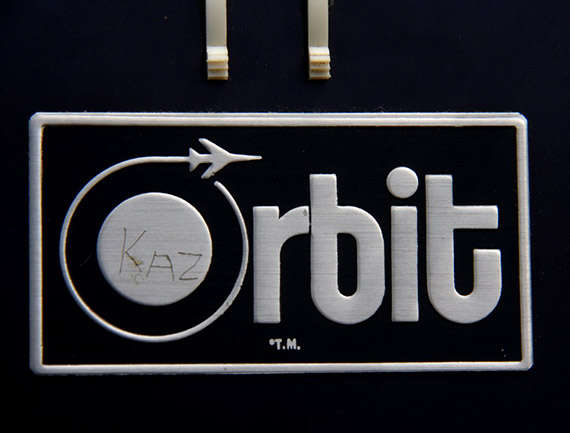

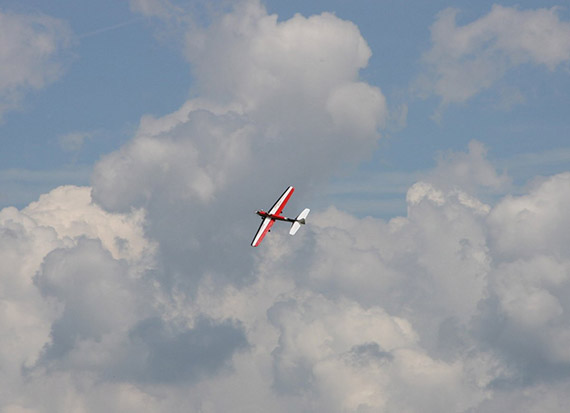
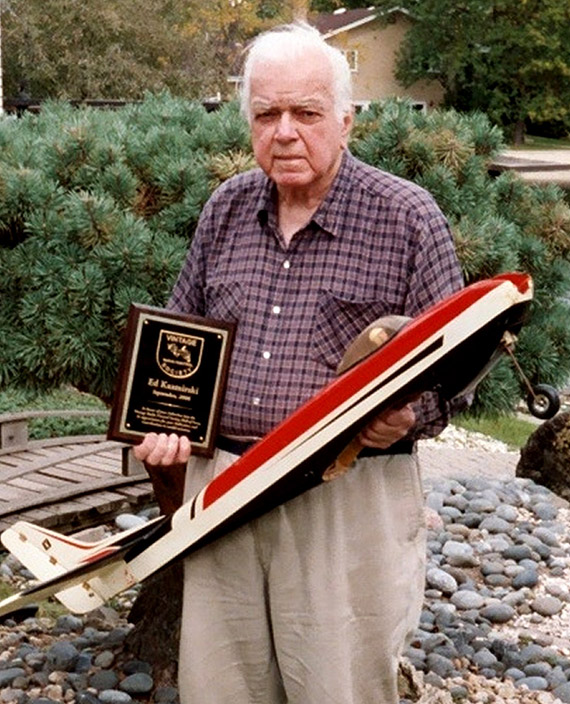







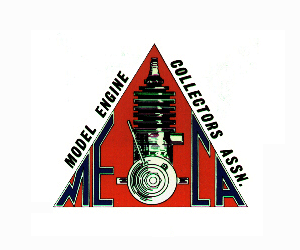

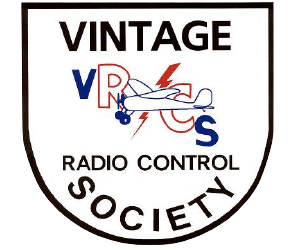

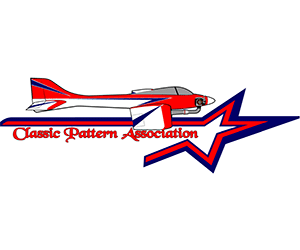








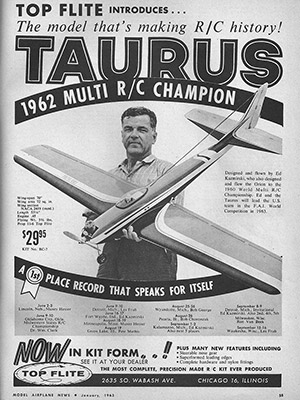
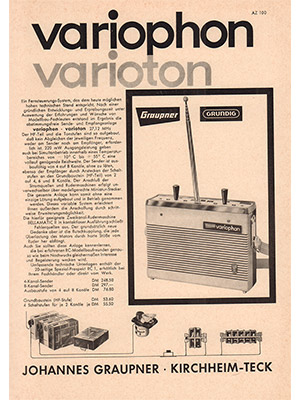
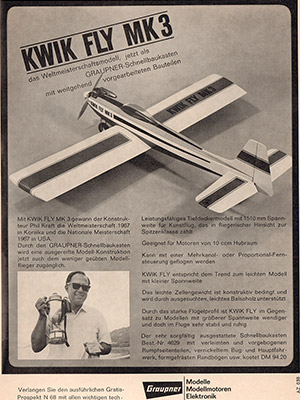

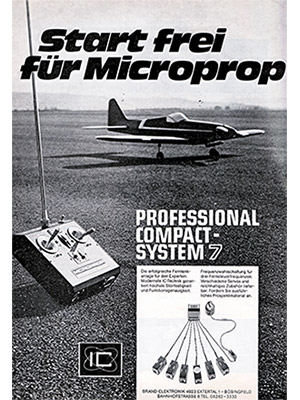

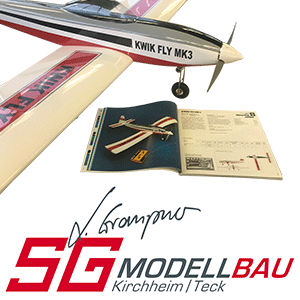
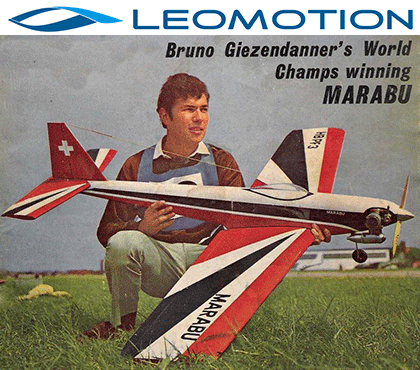

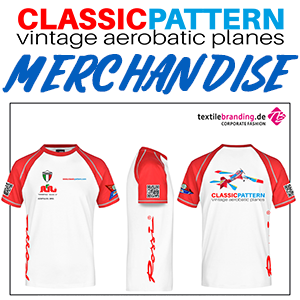
Great memories.thank you for putting all the facts of Kaz’s life together.
I flew the Taurus when it first came out. I flew it with Orbit reeds and with the Bonner digimite proportional system.
It was and still is a great flying model.
Thank you again.
Stan karpelowitz